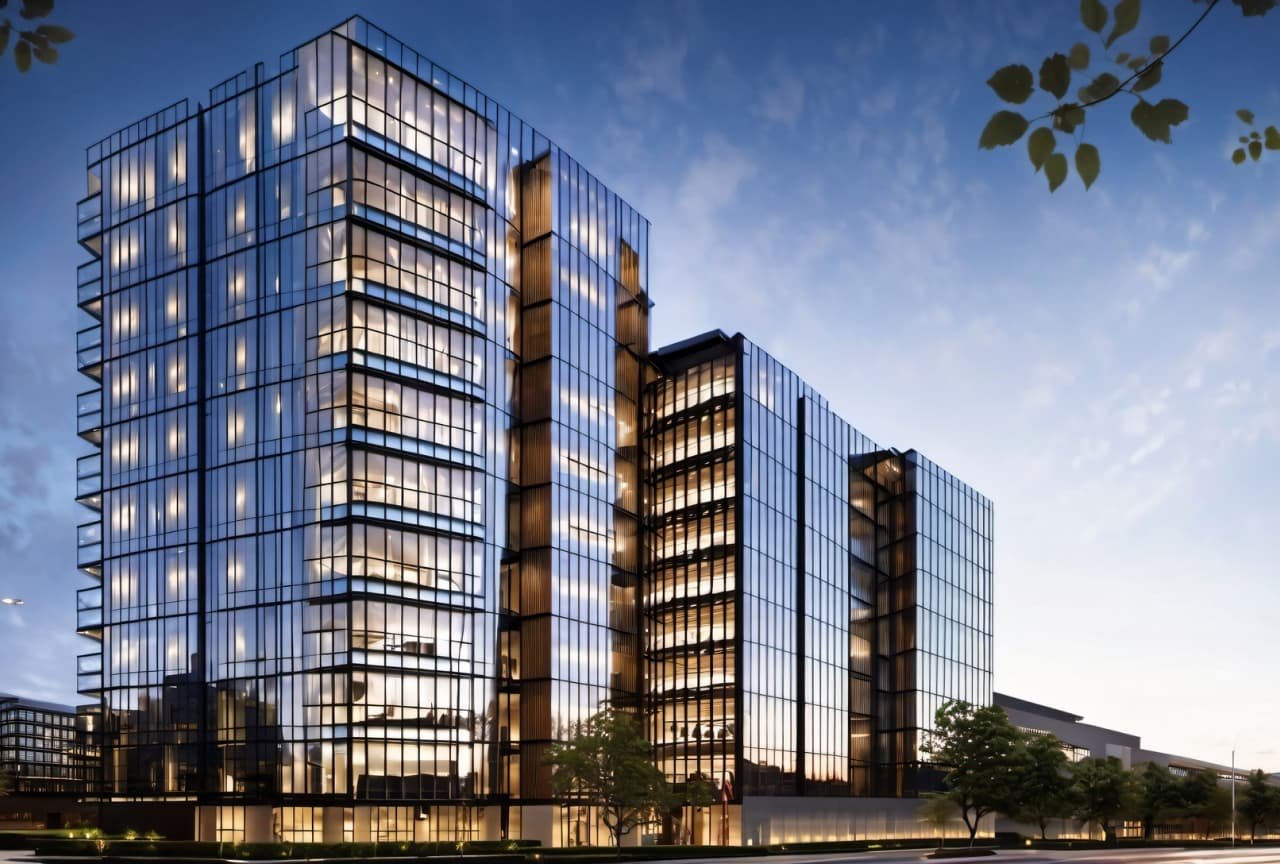Introduction
Modern architecture is more than just a style; it is a reflection of an era and a response to the technological and social advances of the Industrial Revolution. This article explores the characteristics, evolution, and main styles of modern architecture, providing a comprehensive and objective overview.
Origins of Modern Architecture
Modern architecture emerged in response to the Industrial Revolution. Prior to this period, detailed and ornate architectural styles predominated. With the advent of industrial materials like concrete and glass, and the adoption of new technologies, more minimalist and functional designs emerged. The Bauhaus movement, a fundamental influence during this transition, promoted innovative architectural forms and models that moved away from ornamentation towards pure and straight lines.
Key Characteristics
Modern architecture is distinguished by the extensive use of concrete, glass, and metal. These characteristics respond not only to a minimalist aesthetic but also to improved functionality and harmonious integration with the environment. Designs in this style are known for their straight lines, smooth surfaces, and the absence of unnecessary ornaments.
This architecture primarily features the use of concrete, metal, and glass. It brought new technologies, new materials, straight lines, and minimalism, moving away from ornamentation towards very pure, minimalist lines, cubes, and clean forms.
Influential Architects
Among the pioneers of modern architecture are figures such as Frank Lloyd Wright and Le Corbusier. Their works not only define the modern style but also continue to be crucial influences in contemporary architecture. Wright, with his design of Fallingwater, integrated nature in a revolutionary way, using concrete and glass to create a structure that seems to float above the waterfall.
Frank Lloyd Wright and Le Corbusier were icons of modern architecture and continue to be seen as pioneers. Their contributions have left a lasting impact on the architectural landscape.
Main Styles of Modern Architecture
Modern architecture encompasses a variety of styles, each with its unique characteristics and influences. Some of the most notable styles include:
- International Style: Characterized by simplicity, the use of pure geometric forms, and the absence of ornaments. This style emphasizes volume over mass, balance over symmetry, and the use of industrial materials like steel and glass. Notable examples include buildings designed by architects like Ludwig Mies van der Rohe and Philip Johnson.
- Brutalism: This style highlights the use of raw concrete and bold, monumental designs. Although often controversial for its austere appearance, Brutalism has made a significant impact on urban landscapes worldwide. Buildings like the Barbican Estate in London and the Boston City Hall are iconic examples of this style.
- High-Tech: Merges architecture with advanced engineering, using innovative materials and construction techniques. High-Tech architecture often features exposed structural elements, extensive use of glass, and an emphasis on technology. The Pompidou Centre in Paris, designed by Richard Rogers and Renzo Piano, is a quintessential example of High-Tech architecture.
Today, both in architectural design and interior design, modernism continues to be widely utilized. Its principles of simplicity, functionality, and the use of modern materials resonate strongly with contemporary needs and aesthetics.
Evolution and Current Relevance
Modern architecture is not just a trend of the past; it continues to influence contemporary design. The functionality, simplicity, and adaptability of the modern style make it ideal for a variety of applications, from residential buildings to commercial skyscrapers.
The principles of modern architecture have evolved over time, adapting to new technologies and changing societal needs. Sustainable design, for instance, has become a critical aspect of modern architecture. Architects now focus on creating energy-efficient buildings that minimize environmental impact, incorporating renewable energy sources, green roofs, and sustainable materials.
It will likely take many years for modern architecture to go out of style or be replaced as a foundational design approach. Its pure lines and minimalist principles allow for evolution towards futuristic architecture, integrating seamlessly with new technological advancements.
Conclusion
Exploring modern architectural styles is an adventure that reveals much about how we have evolved as a society and how we continue to adapt to our environment. Modern architecture, with its focus on functionality, minimalist aesthetics, and technological innovation, will remain a dominant influence in the future of design.
With this knowledge, we can better appreciate the structures that surround us and understand the decisions behind their design. Modern architecture not only defines our era but also paves the way for future innovations. Its principles of simplicity, functionality, and integration with nature continue to inspire architects and designers, ensuring that modern architecture remains relevant and influential for years to come.
By understanding the key characteristics and influential architects of modern architecture, as well as its main styles and current relevance, we can appreciate the beauty and functionality that this architectural approach brings to our built environment.
Desiree Moraes
–
Architect and Co-Founder
As the creative director of Moar Architects, Desiree Moraes masterfully leads a team of architects and interior designers, transforming each client’s vision into extraordinary spaces that not only meet but exceed their dreams.



